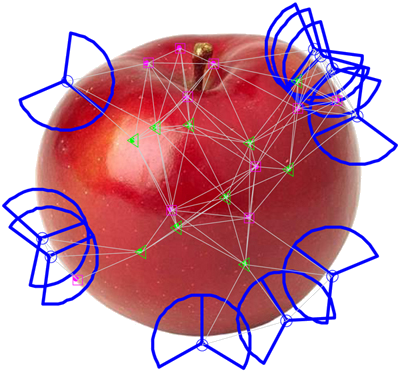Paolo Stegagno's website
Object classification with robotic swarms
The ability to identify the target of a common action is fundamental for the development of a multi-robot team able to interact with the environment. In most existing systems, the identication is carried on individually, based on either color coding, shape identification or complex vision systems. Those methods usually assume a broad point of view over the objects, which are observed in their entirety. This assumption is sometimes difficult to fulfill in practice, and in particular in swarm systems, constituted by a multitude of small robots with limited sensing and computational capabilities.
We are developing a method for target identification with a heterogeneous swarm of low-informative spatially-distributed sensors employing a distributed version of the naive Bayes classifier. Despite limited individual sensing capabilities, the recursive application of the Bayes law allows the identification if the robots cooperate sharing the information that they are able to gather from their limited points of view. In addition, our framework is able to fuse together the information gathered by many different types of sensors, such as cameras, reflectance sensors and laser scanners. Simulation results (see figure) show the effectiveness of this approach highlighting some properties of the developed algorithm.
References
[1] P. Stegagno, C. Massidda and H. H. Bülthoff, Distributed Target Identification in Robotic Swarms, 30th ACM/SIGAPP Symposium On Applied Computing, Salamanca, Spain, Apr. 2015. (download)
